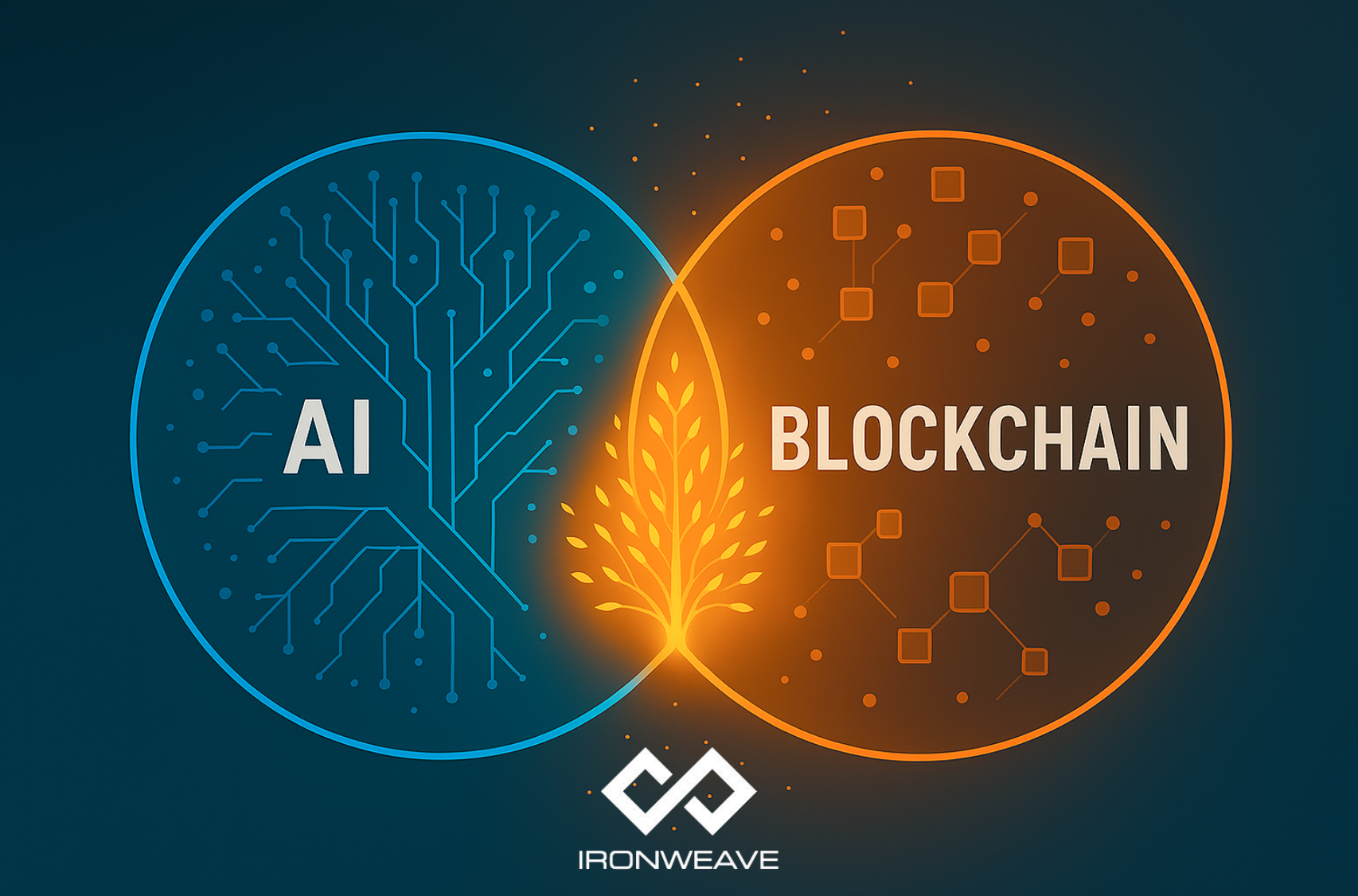AI + Blockchain = Trusted Intelligence

As AI becomes an even more deeply rooted part of our everyday activities, some of the most important questions that often aren’t asked include: who will control it? Who will benefit most from its capabilities? And perhaps the most important question we should be asking is: will the majority of people view AI as a positive force in their lives?
Andreessen Horowitz (a16z), one of the most influential venture capital firms in technology, has invested heavily in both artificial intelligence and blockchain. Their crypto funds—among the largest in the world—total $4.6 billion across four funds, spanning everything from crypto exchanges and NFTs to gaming and infrastructure. Clearly a16z believes AI and crypto will generate incredible value.
Digging a bit deeper, we need to think through those important questions of benefits and value. The value and impact of AI on our lives will depend on AI being reliable, on its output being trusted and tamper-resistant, and on our interactions with AI being private to each of us… something we’ll call trusted intelligence. Only when AI is trusted will it be able to deliver on that promise, and on those investments.
Now a16z is turning even more attention to AI. This year they’re reportedly raising a $20 billion fund dedicated to AI investments—an enormous bet on the technology’s future.
Given their deep financial and strategic involvement in both blockchain and AI, when a16z publishes a position paper outlining how they expect these sectors to evolve, it’s worth paying close attention. Their framing in such papers signals not only where the capital is flowing—it also may help define the architecture of tomorrow’s internet.
A recent publication from a16z, titled AI x crypto crossovers, identifies eleven areas where they believe the intersection of crypto and AI will have a significant impact on the future - our future. You can read the publication yourself on their website.
In this three-part blog series, we summarize the eleven areas a16z identifies at the intersection of crypto and AI, and share how IronWeave’s secure, scalable, and decentralized architecture can meet those challenges - and seize the opportunities - in this emerging landscape.
Section 1: Persistent data and context in AI interactionsAI systems struggle to retain and transfer user context across platforms, but using blockchain, this context could become a persistent, portable asset — improving personalization and enabling users to own and even monetize their data. This approach could revolutionize everything from gaming to professional applications by ensuring AIs remember and apply user preferences seamlessly across systems.How IronWeave adds value:
IronWeave is uniquely suited to support portable, persistent context for AI systems thanks to its modular, private-by-default architecture. Here’s how:
- Contextual data as secure, composable objects: IronWeave lets users or applications define context data (e.g., personal preferences, project history, interaction styles) as encrypted, independently permissioned records. These can be referenced or shared across AI systems without exposing the underlying data, making them both privacy-preserving and interoperable.
- Decentralized control of context: Unlike single-chain blockchains, IronWeave stores data on-chain, and on independent but interoperable chains. This ensures that context remains under the user’s control and isn’t locked into any specific AI vendor, app, or platform.
- Cryptographic agility and forward compatibility: As AI applications evolve, IronWeave’s pluggable cryptography allows developers to upgrade the security layer beneath context-sharing protocols, ensuring long-term resilience and usability.
Bottom line: IronWeave can serve as the backbone for portable AI context layers — persistent across apps, secure against unauthorized access, and future-proof by design.
Section 2: Universal identity for agentsAs AI agents operate across multiple platforms they need a portable, verifiable identity — a kind of digital passport — to enable payments, track reputation, and ensure interoperability. Blockchain can provide this neutral, composable identity layer, avoiding lock-in and allowing agents to function consistently across ecosystems.
🔹 Where IronWeave Fits:
IronWeave can serve as the infrastructure layer for portable, multi-surface agent identity:
- Each agent’s identity can live on its own private, cryptographically secure chain, acting as both identity registry and changelog.With the digital key infrastructure built into IronWeave and unique to each IronWeave chain, verifiable identity and ownership can be defined and determined, validated by a digital signature, with each interaction (verification, activity, so on) logged and immutable.
- With programmable access controls, users can define who can read, verify, or interact with an agent’s identity — whether another agent, app, or payment system. More importantly, such agents are private and unknown to everyone but their owner and whomever that owner chooses to interact with, an important distinction from agents on scannable chains that could be spied upon, compromised, front-run, or pattern-detected.
- IronWeave’s mesh design supports multi-chain interoperability, so agents can operate across platforms without lock-in or loss of context.
🔸 Why It Matters:
Rather than anchoring identity to a centralized registry or single blockchain, IronWeave lets developers and users self-host agent identities that are resilient, transparent, and future-compatible. It supports decentralized discovery, reputation, and payment, enabling agents to act autonomously and securely across the internet.
Section 3: Forwards-compatible proof of personhoodAs AI-generated content floods the web, decentralized proof of personhood (PoP) is becoming essential for verifying who’s human in a privacy-preserving and portable way. Blockchain-based PoP systems offer user-owned, interoperable IDs that can work across platforms - helping rebuild trust and creating more secure, authentic online experiences.
🔹 Where IronWeave Fits:
IronWeave can enhance decentralized PoP systems by serving as a tamper-resistant, privacy-preserving, and scalable foundation:
- Unlike systems with a single blockchain bottleneck, IronWeave’s mesh structure can isolate identity chains from broader networks, reducing risk of mass surveillance or compromise.
- PoP credentials can be stored or referenced on IronWeave with user-defined visibility and other configurable properties — e.g., selectively disclosing verification without revealing sensitive data.
- IronWeave supports modular cryptography, including enabling future work in quantum-resistant encryption to be implemented, ensuring that PoP systems stay secure even as cryptographic threats evolve.
🔸 Why It Matters:
IronWeave believes that PoP should be portable, censorship-resistant, and self-sovereign. Its architecture supports dynamic adoption across platforms and future-proof upgrades, helping decentralized identity systems scale without sacrificing trust or control.
In our next blog installment we’ll dig into the next few areas from the a16z publication:
- Decentralized Physical Infrastructure (DePIN) for AI
- Infrastructure and guardrails for interactions between AI agents, end-service providers, and users
- Keeping AI/vibe-coded apps in sync
- Micropayments that support revenue sharing
We’re in the beginning days of disruptive times, with a handful of truly transformative technologies beginning to intersect and produce previously unimagined, inconceivable applications. We’re excited and bullish on this future, and ready to play a central role with our private-by-design architecture that provides data owners with the greatest degree of control over their data.
